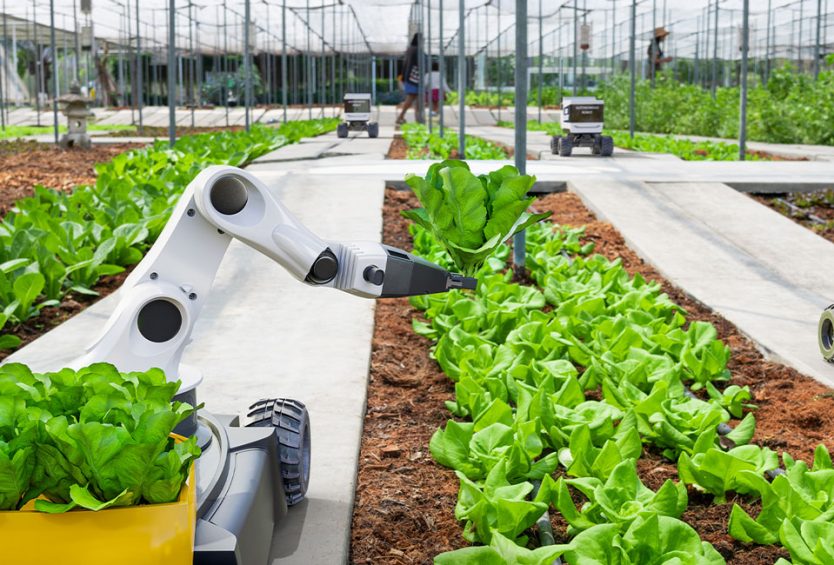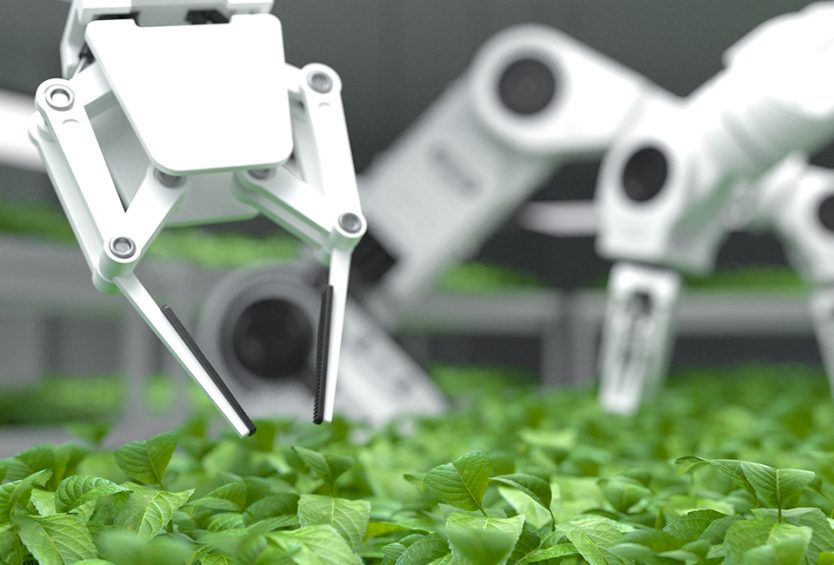The food manufacturing and processing industry for many years has always been one of the important economic sectors of Vietnam and still has a lot of room for development. However, the COVID-19 pandemic has caused unprecedented turmoil, causing many businesses in the industry to be greatly impacted.
In order to revive the post-pandemic era and move towards a new normal, businesses not only need to grasp market trends, changes in consumer behaviours, and invest in modern equipment and technology, but also need a digital transformation strategy in production to ensure excellent operations, increase customer experience and create new business models, thereby reinforcing advantages and competitiveness in the current fierce business environment
Current situation of the food manufacturing and processing industry in the world and in Vietnam
According to a report by ResearchAndMarkets, in the period of 2019 – 2024, the total value of the food manufacturing and processing market is estimated at $4.1 trillion with a compound annual growth rate of 4.3% (1). However, the world is facing the COVID-19 pandemic, a factor that has a huge and comprehensive impact on the development prospects of the industry. The global health crisis has reversed some trends, accelerated and created entirely new ones, due to the increasing demand of the global population of ready-to-eat foods, the changes in food lifestyle, eating habits, as well as increasingly strict requirements on nutrition, traceability, safety and sustainability of food.
According to data from the General Statistics Office, the number of enterprises operating in the food manufacturing and processing industry in Vietnam only accounts for nearly 1% of the total number of enterprises in the country, but the production value of this industry accounts for a proportion of up to 19,1% in the Vietnam’s processing and manufacturing industries (2). It shows that Vietnam’s food manufacturing and processing industry is one of the important spearhead industries, making great contributions to economic growth, ensuring food security as well as meeting the demand of exporting to regional & global market. However, similar to the general global picture, the pandemic also brings opportunities and challenges, requiring domestic enterprises to produce corresponding “immune systems” and have a comprehensive transformation strategy to adapt and seize development opportunities in new situations.
Development opportunities of Vietnam’s food manufacturing and processing industry
Domestically, Vietnam has always prioritized the development of the food manufacturing and processing industry, in order to increase the output and export value of agricultural products and processed foods. On average, in the five years 2016-2020, Vietnam’s food processing industry has a stable growth rate of nearly 7%/year (2). Contributing to this growth must include factors such as a young population, an increase in per capita income, and a strong urbanization process in big cities, provinces and regions across the country, creating a consumer market with stable natural growth.
In addition, Vietnam has also been actively participating in the international integration process through Free Trade Agreements (EVFTA, CPTPP, etc.). This is a favorable condition for enterprises in the industry to easily expand their markets and increase export output. Therefore, in order to quickly seize opportunities and increase competitiveness, domestic enterprises need to constantly strive for innovation, focusing on investing heavily in modern equipment and technology to improving their 4.0 production capabilities, assuring product quality, food safety and hygiene as well as building brand awareness, promoting products domestically & globally.
Challenges for Vietnam’s food manufacturing and processing industry
The global pandemic we are facing is the most obvious challenge today for the domestic food industry. According to leaders of the Ministry of Industry and Trade, specific impacts include disruption in the supply chain of raw materials, decline in domestic consumption, and export orders being canceled or significantly reduced; logistics activities, freight transportations are stalled, congested at ports; goods and capital flows are either in short supply or accumulated in warehouses… (3) .In addition, consumers tend to change their habits and lifestyle drastically during the pandemic and are increasingly demanding in terms of quality, nutrition, and reasonable prices of products, requiring businesses to have appropriate change and response strategies.
Vietnam is one of the countries most affected by climate change, threatening agricultural production, leading to the decrease in quality of raw materials for processing, and not meeting food standards and safety. The scale of agricultural production is still small and has not really formed a large agriculture with the modernity direction. Beside a few large domestic food processing and manufacturing enterprises, the remaining enterprises in the industry are mostly small in scale. The machines are invested asynchronously, so the data is not uniform; lack of investment costs, lack of improvement and technical upgrade for the current equipment and technology system; risks in choosing inappropriate equipment and technology (4).
In addition, the ability of workers and manufacturing enterprises to assimilate new technologies & tools and master the process is currently a weak link in the innovation system of the Vietnamese food industry, causing direct obstacles to the implementation of comprehensive digital transformation strategies in enterprises.
In addition to the opportunities that free trade agreements bring, the challenge for businesses to bring Vietnamese food to the world is not limited. Prominent among them are strict regulations on food hygiene and safety, transparency in origin from exploitation to consumers, sustainability in production associated with social responsibility and environmental protection.
Digital Transformation – The future of the food manufacturing and processing industry
The Covid-19 pandemic has made awareness of digital transformation trends in the food industry more urgent. Digital transformation is an imperative, continuous and irreversible trend due to the constant change of technology, customer needs and market trends. That confirms the undeniable importance of digital transformation, even after the COVID-19 crisis is over, which directly determine the survival of the industry and businesses. Many businesses in the industry have to adapt quickly and flexibly to new technologies and processes, as well as train and build the right motivation for each individual in the organization to be ready to respond to challenges as well as seize development opportunities in today’s digital era.
The purpose of digital transformation is to strengthen the core competencies of the business & discover new opportunities by transforming people, systems or processes. The benefits of digital transformation include operational excellence, enhanced customer experience, and the creation of new business models.
The following are digital transformation trends in the food manufacturing and processing industry, allowing businesses to react faster to changes and create a foundation for continued growth in the future:
1. Factory of the Future(5)

Future factory solutions help the leadership team significantly improve the ability to evaluate and control the entire production and business process closely; and at the same time monitor production areas and employee productivity to promptly make important decisions to adjust and improve the operation of the enterprise comprehensively.
Smart factories are also an important linkage in connecting with supply chain participants, creating transparency in information exchange and origin of input materials. With real-time analysis of market and supply and demand data, companies gain the ability to source materials faster along the supply chain, driving production efficiency and delivering on-market demand delivery. In addition, new technologies are supporting precise manufacturing and efficient use of ingredients and processing materials, thereby minimizing waste and ensuring safe production, correctly comply to the current regulation on the food safety
2. Transparency in origins
The food manufacturing and processing industry is one of the industries with the most stringent requirements in terms of quality, and origin transparency, due to its direct impact on human health.
Food traceability involves tracking the product’s history and sharing that data throughout the entire production and processing process from farm to factory to consumer. When it comes to food, knowing exactly where the raw materials come from is important, especially for the production, processing and consumption of fresh food. In addition to the regulations of the governments of the countries for the quality and origin of products, consumers themselves also set requirements for the nutrition, sustainability, and environmental friendliness of products. Typical are European countries, where they are willing to pay more to buy organic food.
Vietnam’s entry into the global supply chain by actively participating in free trade agreements also poses the transparent of origin problem for businesses in the food sector. By ensuring this factor, Vietnamese food can be accepted and developed in the world’s marketplace.
3. Supply Chain Optimization
A strong supply chain is vital in times of crisis and a big plus in the new normal. The COVID-19 epidemic began to entail a series of changes in business processes, supply chains and relationships with customers. These changes must be made quickly and flexibly. Through digital transformation, supply chains can be linked and expanded into a flexible and sustainable system – with the help of modern IT systems.
Today, digital solutions are implemented providing many opportunities for enterprises to accurately identify market needs to optimize production, such as in relation to product range, price or customer segment. Thanks to digital technology, data is aggregated, analyzed and evaluated in real time. This allows businesses to timely recognize trends, accurately forecast demand, improve cooperation with suppliers, thereby increasing efficiency and shortening time to market.
4. Connecting, enhancing the consumer experience on all channels
Isolation or social distancing during the pandemic outbreak has drastically changed consumer behavior, making them appear more and more on e-commerce platforms or social networks – where they also want to be welcome and taken care of.
With Omni-Channel (Omni-Channel)(6) solutions, you can easily market, sell, reach and serve your customers across different sales channels – regardless of where the customers are, what channel they are using whether it is an online or offline platform. This helps businesses ensure a consistent, seamless customer experience across all channels, thereby retaining customers and increasing the number of new customers, resulting in increased sales.
Just selling products today is not enough, customers also want to experience personalized products and services. Fortunately, the development of technology has made it possible for people to process large amounts of data through the use of innovative IT solutions, especially those that integrate artificial intelligence (AI). This allows businesses to have an overview of user behavior and habits, thereby creating personalized product and service lines for their customers.
5. Acceleration in e-commerce and D2C (Direct-2-Consumer) strategy
Currently, many people, especially the younger generation or busy ones, shop more online instead of going to stores or supermarkets. That is why the expansion and acceleration of e-commerce is crucial to the development strategy of many food manufacturing and processing enterprises.
With a D2C(7) strategy – direct to consumers – products are sold or marketed directly from the producer to the consumer. The basis for the success of a D2C strategy is data and the analysis and use of data. Digital transformation allows businesses to collect these data themselves, from which they can better understand their target customer groups through the analysis of consumer behavior data, and make timely business decisions without having to rely on the help of external platforms or a third party.
6. Training employees on digital transformation, building 4.0 corporate culture

On one hand, digital transformation helps to digitize various company processes, thereby improving operational efficiency. On the other hand, these process changes can pose challenges for many employees. The reason may be due to the limited access to technology of the workforce, which requires time and patience when getting used to and using new technologies. Therefore, organizing internal digital transformation training programs for all employees is an important task of the enterprise, determining the success or failure of digital transformation. The process of transforming people with the goal of building 4.0 corporate culture will promote creativity and innovation associated with technology, helping businesses have sustainable human resources in the digital transformation journey.
Reference:
(1) Researchandmarkets. 2019. Food Processing Market Report: Trends, Forecast and Competitive Analysis
(2) General Statistics Office. Bright Prospects of the Food Processing and Manufacturing Industry
(3) Banking Plus. Challenges and opportunities for the food processing industry
(4) OCD. How has the food industry been applying digital transformation?
(5) Rockwellautomation. 2019. A Digital Recipe For The Future
(6) Salesforce.2020. Omnichannel-handel
(7) Salesforce. Going Direct to Consumer While Maintaining Your Relationships with Retailers



